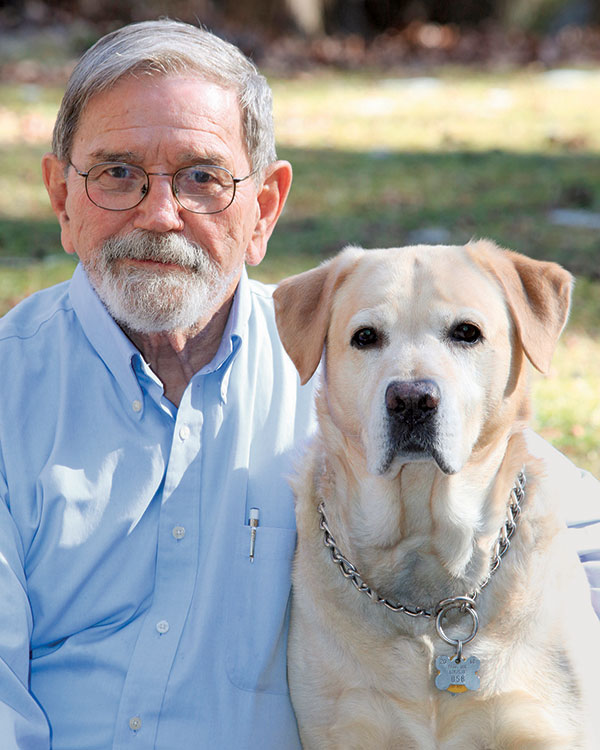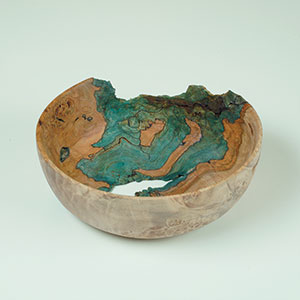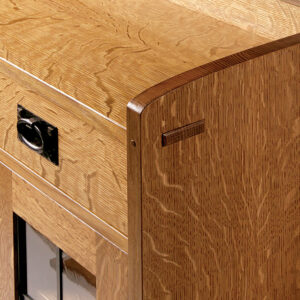From the Editor: Remembering R. Bruce Hoadley
Editors and furniture makers remember the author of "Understanding Wood" on the occasion of his passing.
Woodworking lost a hero last October, with the passing of R. Bruce Hoadley. Hoadley, a contributing editor to Fine Woodworking from 1976 to 2004, had been involved with the science of wood for more than 50 years and was a longtime professor of wood science and technology at the University of Massachusetts at Amherst.
Hoadley, of course, is well known for his seminal book for woodworkers, Understanding Wood. Originally published by The Taunton Press in 1980, Understanding Wood is essentially the instruction manual for wood and has been used by thousands of furniture makers and builders for 40 years. It explains in a very scientific manner how this natural wonder grows and the properties of each species. Hoadley’s gift, however, was translating all that microscopic science into usable information for woodworkers and builders. The book, still in print with a lifetime sales of 131,000, remains an amazing feat of approachable, engaging information, valued by generations of craftspeople.
Hoadley’s influence is broad and deep, so I thought the most appropriate tribute to him would be to let renowned woodworkers and teachers (and one book editor) talk about the impact Understanding Wood has had on their careers.
Rest easy, Dr. Hoadley. Your legacy is etched in our hearts and minds.
—Tom McKenna, Editorial Director

Professor R. Bruce Hoadley had a major influence on my career. I started out in forestry and a few years later took a wood tech course. At the time, the only source of information was the Wood Handbook: Wood as an Engineering Material. Although relevant, it was extremely dry. In 1981 I got the first edition of Understanding Wood. This book was way better. Yes, there were parts that were quite technical, but I read it cover to cover. Understanding Wood is still my go-to reference, and is listed in the bibliographies of both of my last two books. It has been a major contribution to the field of woodworking.
—C.H. Becksvoort
My early years of woodworking were informed by two giants in woodworking media: Tage Frid and R. Bruce Hoadley. Mr. Frid taught me how to create accurate joinery and Dr. Hoadley taught me how to anticipate wood movement to keep that joinery together. Understanding Wood has stood the test of time and will guide woodworkers for generations to come.
—Rollie Johnson
Understanding Wood has always been my go-to book to really learn the science of wood—how much that tabletop will actually expand and why, what’s grain vs. figure, what wood will survive outdoors. No doubt it was a woodworker’s love of wood that started Bruce’s research. The knowledge he shared will always be useful to all of us.
—Garrett Hack
I found Understanding Wood in the late 1980s. To this day, I look up Hoadley’s formula to calculate wood movement when I’m designing furniture. But what I appreciate most about Hoadley is that his work goes beyond engineering geekery to encompass woodworking’s artistic dimensions; one of my favorite parts of Understanding Wood is his exposition of how the cellular structure of soft- and hardwoods, when sawn in particular ways, will produce dramatically different, often eye-popping patterns. Seeing the expression on my clients’ faces when I explain how their piece grew—literally— out of the life of a tree is magic.
—Nancy Hiller

I knew absolutely nothing of Bruce Hoadley when, in 1990, I signed on as a callow copy editor for his second book, Identifying Wood. I was immediately immersed into the world of fusiform rays, parenchyma cells, and cupressoid cross-field pits. What I thought would be a dry academic tome held me spellbound. It was fascinating stuff, and a worthy introduction to my almost 30 years of editing woodworking books.
When I finally met Bruce for the first time in person in 2015, while working on what would be his final book, A Field Guide to Identifying Woods in American Antiques & Collectibles, I was expecting a somewhat intimidating presence, given his eminent professorial status. But Bruce couldn’t have been friendlier.
After that, we stayed in touch over the years. I feel privileged to have known and worked with him, but most of all to count him as a friend.
—Peter Chapman, executive editor, Taunton Press books
Hoadley, R. Bruce … this guy, with all his intensity and sciencing, really did open my eyes to the complexity of wood. He turned my head around in many ways, but I think it was the bits on end grain that really sunk in and opened my eyes to see much more than just weight, color, and grain. I became a wood guy who often measured a board by what I could read looking at the end. Wood is good!
—Hank Gilpin
I never met Bruce Hoadley and yet he had a profound influence on me. His book was the bible that I referred to over and over again. It remains required reading for my students. It is the resource I turn to when I want the truth about wood. It’s hard to figure how someone could have such a big impact on my life without ever having met him. But that’s the case. I mourn his passing.
—Gary Rogowski, director, The Northwest Woodworking School
As a student I was introduced to Hoadley’s book(s) as “the” reference on Wood Technology. We have used Understanding Wood at North Bennet Street School as a research and technical manual for students of all the wood programs. Even some of our non-wood-specific programs use the book, too! Bruce’s knowledge and work will live on here at NBSS.
—Dan Faia, department head, Cabinet and Furniture Making Program, NBSS
Understanding Wood is my favorite book. No other book has had a more significant impact on my work, from how I design to the tools I use and how I use them. You don’t just read Understanding Wood; it needs to be studied one page at a time. Woodworking isn’t just about shaping a material to our will; it’s more about the relationship we have with the wood and our tools. And Hoadley’s books give us everything we need for a happy relationship, in our woodworking lives anyway.
—Andrew Hunter
Bruce Hoadley was a touchstone figure for James Krenov. In many ways his antithesis—Hoadley was analytical and technical where Krenov was intuitive and emotional—Krenov nonetheless had enormous respect and admiration for Hoadley. Krenov’s lectures were peppered with recommendations to “look it up in Hoadley.” Krenov knew that truly understanding wood, being able to work with it on its terms, requires all kinds of knowledge, intellectual and technical as well as experiential, experimental, and longitudinal. Understanding Wood remains a key reference point at The Krenov School. Nothing is timeless, but wood as a material worked by humans comes pretty close.
—Laura Mays, director, The Krenov School























Log in or create an account to post a comment.
Sign up Log in